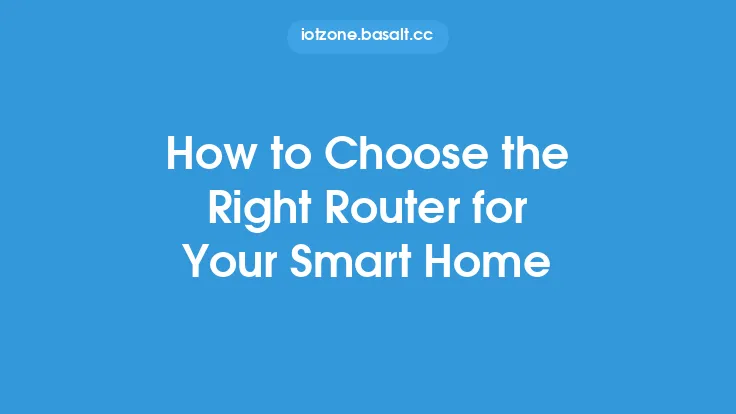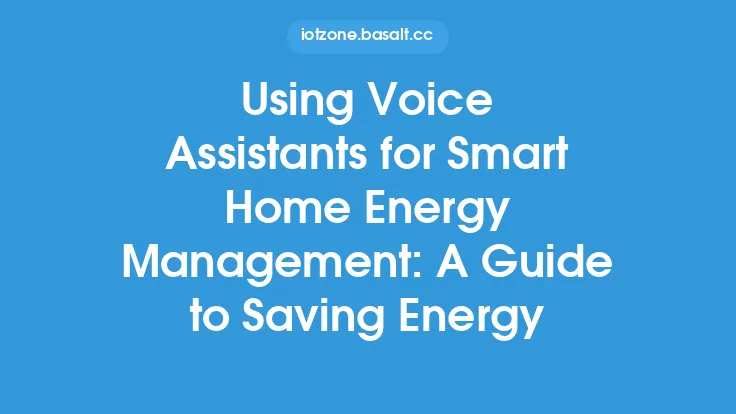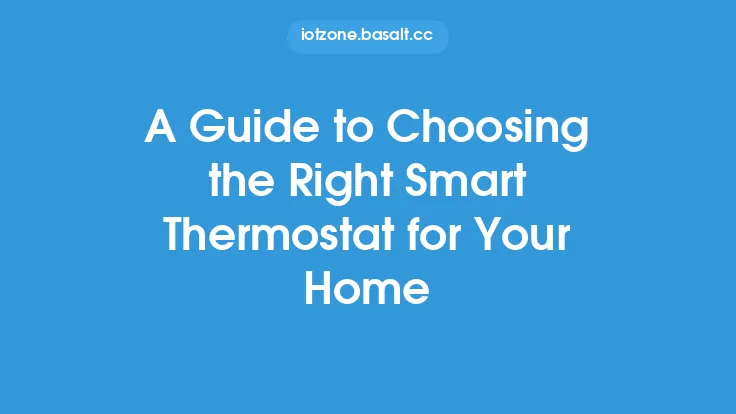When it comes to buying smart home appliances, the options can be overwhelming. With so many different devices and brands available, it's hard to know what to look for and how to choose the best ones for your needs. In this article, we'll break down the key factors to consider when buying smart home appliances, including compatibility, features, and security.
Introduction to Smart Home Appliances
Smart home appliances are devices that can be controlled and monitored remotely using a smartphone, tablet, or computer. They use wireless communication protocols such as Wi-Fi, Bluetooth, or Zigbee to connect to the internet and other devices in the home. Smart home appliances can include everything from thermostats and lighting systems to security cameras and door locks. They offer a range of benefits, including increased convenience, energy efficiency, and enhanced security.
Key Features to Look for in Smart Home Appliances
When buying smart home appliances, there are several key features to look for. These include:
- Compatibility: Make sure the device is compatible with your existing smart home system and other devices in your home. Check the device's compatibility with popular smart home platforms such as Amazon Alexa, Google Home, or Apple HomeKit.
- Connectivity: Consider the type of connectivity the device uses, such as Wi-Fi, Bluetooth, or Zigbee. Make sure the device has a stable and secure connection to the internet.
- Voice Control: If you want to be able to control your devices using voice commands, look for devices that are compatible with popular voice assistants such as Alexa or Google Assistant.
- Energy Efficiency: Consider the energy efficiency of the device, including its energy consumption and any features that help reduce energy waste.
- Security: Look for devices that have robust security features, such as encryption and secure authentication.
Understanding Smart Home Protocols and Standards
Smart home appliances use a range of protocols and standards to communicate with each other and the internet. Some of the most common protocols include:
- Wi-Fi: A wireless networking protocol that allows devices to connect to the internet.
- Bluetooth: A wireless personal area network protocol that allows devices to communicate with each other over short distances.
- Zigbee: A low-power wireless communication protocol that is commonly used in smart home devices.
- Z-Wave: A wireless communication protocol that is commonly used in smart home devices, particularly in the security and home automation industries.
- Thread: A low-power wireless communication protocol that is designed for smart home devices.
Evaluating the Security of Smart Home Appliances
The security of smart home appliances is a critical consideration. When evaluating the security of a device, look for the following features:
- Encryption: Make sure the device uses encryption to protect data transmitted between the device and the internet.
- Secure Authentication: Look for devices that use secure authentication methods, such as two-factor authentication, to prevent unauthorized access.
- Regular Software Updates: Make sure the device receives regular software updates to patch security vulnerabilities and fix bugs.
- Secure Data Storage: Consider the security of the data stored on the device, including any personal data or sensitive information.
Choosing the Right Smart Home Appliance for Your Needs
With so many different smart home appliances available, it can be hard to choose the right one for your needs. Here are some tips to help you make the right decision:
- Identify Your Needs: Start by identifying what you want to achieve with your smart home appliance. Do you want to increase energy efficiency, enhance security, or improve convenience?
- Research Different Options: Research different devices and brands to find the one that best meets your needs.
- Read Reviews: Read reviews from other customers to get a sense of the device's performance, reliability, and security.
- Check Compatibility: Make sure the device is compatible with your existing smart home system and other devices in your home.
Installing and Setting Up Smart Home Appliances
Once you've chosen your smart home appliance, it's time to install and set it up. Here are some tips to help you get started:
- Follow the Manufacturer's Instructions: Follow the manufacturer's instructions for installing and setting up the device.
- Download the App: Download the app associated with the device to control and monitor it remotely.
- Connect to the Internet: Connect the device to the internet using a Wi-Fi or Ethernet connection.
- Configure Settings: Configure the device's settings, including any security features or notifications.
Troubleshooting Common Issues with Smart Home Appliances
Like any technology, smart home appliances can sometimes experience issues or problems. Here are some common issues and how to troubleshoot them:
- Connection Issues: If the device is not connecting to the internet, check the Wi-Fi or Ethernet connection and restart the device.
- Software Issues: If the device is experiencing software issues, check for updates and restart the device.
- Security Issues: If you suspect a security issue, change the device's password and enable two-factor authentication.
Conclusion
Buying smart home appliances can be a complex and overwhelming process, but by considering the key factors outlined in this article, you can make an informed decision and choose the best devices for your needs. Remember to evaluate the compatibility, features, and security of each device, and don't be afraid to ask for help if you need it. With the right smart home appliances, you can create a convenient, energy-efficient, and secure living space that enhances your daily life.





